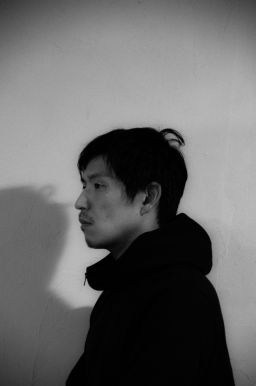Story highlights
Hajime Kimura's photo series "Tracks" focuses on horses' lives in Hokkaido, Japan
Horse racing is popular on the island, and ponies are eyed early for their sporting potential
But if there are any defects, the path is eventually slaughter
On the northern Japanese island of Hokkaido, the life of a horse may be tracked down two distinct paths.
One is long-lived, the horse bred to exhibit its utmost power and beauty. The other is cut straight to the bone, a life that is transient and transformed in an instant.
Hajime Kimura’s black-and-white photo series “Tracks” is a journey down both of those paths.
Racehorse breeding has become a common practice and a significant economic activity for those in Hokkaido. From the moment a horse is born, it is inevitably subject to the watchful eyes of judgment.
If born healthy, able to stand up strong on its newly formed young limbs, the pony will spend its life on the path to becoming a racehorse.

But, if born with any kind of defect, the pony will instead tumble down a much darker path, slaughtered for both animal and human food consumption.
Kimura’s “Tracks” provides viewers with a direct view of the two distinct paths, from eager audiences waiting for the start of a horse race, to an eerily empty, lifeless stable.
“Tracks” was certainly not an easy series for Kimura to undertake.
“The most tough part was that there was no slaughterhouse (that would) let me cover it,” Kimura said via email.
Through the introduction of a friend, however, Kimura was eventually able to photograph a small private farm after his two-month search.
“I felt a lot while shooting,” Kimura said. “The most emotional moment was when a horse was shot in its forehead with a gun. … That was a thought-provoking time for me. I kept staring at the horse changing to meat. I’ve never seen such a thing before.”
The ages of 16 and 21 are often viewed as significant moments in many people’s lives, and this is especially true for Kimura. At 16, Kimura attended a horse race for the first time. Five years later, he ate horse meat. The combination of these two experiences led him on an investigation into the memories of his past.
“I wanted to understand how (my experiences) can connect,” Kimura said.
“Tracks” is ultimately a series in which Kimura descends deep into his memories in order to produce an emotional exploration of life and death.
It leaves viewers to consider the distinction between the path of life and that of death: Is one path truly more bright and hopeful, or more dark and helpless, than the other?
The decision to shoot in black and white is especially poignant.
“This world has color, as you know,” Kimura said. “But I want to see this world simpler. I want to see texture beyond the color, and I want you to evoke your imagination.”
Kimura was raised in Chiba, a prefecture just outside of Tokyo. Having studied architecture and anthropology while in college, his career in photography began nine years ago.
Since then, he has published two photo books, “Kodama” and “Tokyo Etude,” and has received several awards, including first prize for the IPA Photo Book Asia Award in 2013.
What one finds consistent in all of Kimura’s work is his endless curiosity about his surroundings and people.
“In my career in photography,” he said, “one thing I’ve always thought is my priority to enjoy the journey, the process. … The important thing is to live my own life with curiosity, and then I can talk about photography.”
Hajime Kimura is a Japanese photographer based in Tokyo. You can follow him on Instagram and Twitter.








